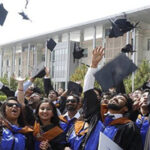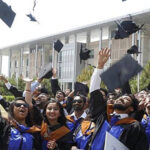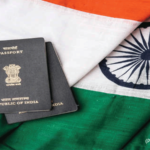More than 50 world leaders attend Nuclear Security Summit 2016, commit to pledged to boost communal efforts to secure nuclear materials
“Of all the threats to global security and peace, the most dangerous is the proliferation and potential use of nuclear weapons,” wrote President Barack Obama in an article he wrote for The Washington Post. Obama inaugurated the first Nuclear Security Summit nearly six years ago, after a landmark speech in Prague in 2009 laying out the goal of a world free of nuclear weapons.
More than 50 world leaders along with international organizations like the United Nations and INTERPOL attended the fourth and final Nuclear Security Summit 2016 of Obama’s presidency, March 31st – April 1st in Washington, DC, focusing on efforts to lock down vulnerable atomic materials to prevent nuclear terrorism, which he had called “one of the greatest threats to global security” in the 21st century. In his address, Obama said, the world faced a persistent and evolving threat of nuclear terrorism despite progress in reducing such risks. But he insisted: “We cannot be complacent.
These biannual nuclear summits, aimed at locking down fissile material worldwide that could be used for doomsday weapons, were proposed by President Obama back in 2009, barely two months into his presidency. “We must insure that terrorists never acquire a nuclear weapon,” he declared, calling such a scenario “the most immediate and extreme threat to global security.” In that same April 2009 speech, Obama challenged the world’s keepers of some 2,000 tons of highly enriched uranium and plutonium to “secure all vulnerable nuclear material around the world within four years.”
Since the atomic bombings of Hiroshima and Nagasaki, proliferation of nuclear weapons has increased tremendously. During the Cold War, much of the debate centered on the U.S.-Soviet nuclear balance. Since the collapse of the Soviet Union, nuclear weapons have continued to be a major preoccupation of America, with more nations acquiring the nuclear weapons and many more trying to build nuclear arsenals. But, the most dangerous threat has been from the terrorist and rogue groups that have been stealing and making all out efforts to get hold of enriched uranium, a component that is used to build nuclear weapons.
Deadly bomb attacks in Brussels last month have fueled concern that Islamic State could eventually target nuclear plants, steal material and develop radioactive “dirty bombs”. Obama said the required 102 countries had now ratified an amendment to a nuclear security treaty that would tighten protections against nuclear theft and smuggling.
President Barack Obama urged world leaders on April 1st to do more to safeguard vulnerable nuclear facilities to prevent “madmen” from groups like Islamic State from getting their hands on a nuclear weapon or a radioactive “dirty bomb.” There is no doubt that if these madmen ever got their hands on a nuclear bomb or nuclear material, they would certainly use it to kill as many innocent people as possible,” he said. “It would change our world.”
Nine countries together possess more than 15,000 nuclear weapons. The United States and Russia maintain roughly 1,800 of their nuclear weapons on high-alert status – ready to be launched within minutes of a warning. Most are many times more powerful than the atomic bombs dropped on Japan in 1945. A single nuclear warhead, if detonated on a large city, could kill millions of people, with the effects persisting for decades
Southern Asia is home to three nuclear powers—China, India, and Pakistan—that continue to expand and modernize their arms programs. Such nuclear competition is dangerous given mounting mistrust and a dearth of diplomatic measures in place to reduce risk of confrontation. China is seeking to soon achieve a nuclear triad (land, air, and sea-based nuclear delivery capabilities). Analysts estimate that China’s inventory is close to two hundred and fifty warheads. North Korea’s quest to acquire nuclear weapons has been never ending.
Experts estimate that Pakistan has 110 to 130 warheads and two types of delivery vehicles (PDF): aircraft and surface-to-surface missiles. Pakistan’s chronic political instability, spotty nonproliferation record, and ongoing threats posed by militant forces have focused special concern on the safety of its nuclear materials.
India possesses a developed strategic nuclear program and currently fields nuclear-capable aircraft and ballistic missiles controlled by a civilian command structure, theNuclear Command Authority. New Delhi has an estimated stockpile of 110 to 120 warheads and is expanding its military nuclear capabilities. In 2011, New Delhi spent approximately $4.9 billion (PDF) on nuclear weapons, up from $4.1 billion the previous year, according to Global Zero, a nongovernmental disarmament movement.
The United States and India negotiated a landmark civil nuclear deal beginning in 2005, which was later signed into U.S. law in 2008. Washington saw the deal as a practical way to overcome barriers to cooperation and also because it believed “it would be better to have India inside the international nonproliferation tent than outside,” says CFR’s Alyssa Ayres.
World leaders and international organizations pledged to boost communal efforts to secure nuclear materials. But there won’t be any more global summits on the issue in the near future. The leaders said in a joint communique at the summit’s close that the broad goal of the summit process has been to address the threat of nuclear terrorism by minimizing and securing weapons-usable nuclear materials, enhancing international cooperation to prevent the illicit acquisition of nuclear material by non-state actors such as terrorist groups and smugglers, and taking steps to strengthen the global nuclear security system.
The world leaders acknowledged that there’s more work to prevent nuclear terrorism and promote disarmament, which requires further international cooperation President Barack Obama says there’s a persistent and evolving threat of terrorists conducting a nuclear attack.
While addressing the Summit leaders, Prime Minister Narendra Modi of India pledged to accord a high national priority to nuclear security through strong institutional framework, independent regulatory agency and trained and specialized manpower, while developing and deploying technology to deter and defend against nuclear terrorism, by making efforts to stop nuclear smuggling and strengthen the national detection architecture for nuclear and radioactive material.
While gains have been made, arms-control advocates say the diplomatic process – which Obama conceived and championed – has lost momentum and could slow further once he leaves the White House in January, next year. Moscow, which holds the world’s largest nuclear weapons stockpiles, ended virtually all its nuclear cooperation with the U.S. more than two years ago as part of the political fallout from tensions over Ukraine.
The failure of the nuclear powers to disarm has heightened the risk that other countries will acquire nuclear weapons. The only guarantee against the spread and use of nuclear weapons is to eliminate them without delay. Although the leaders of some nuclear-armed nations have expressed their vision for a nuclear-weapon-free world, they have failed to develop any detailed plans to eliminate their arsenals and are modernizing them.
According to analysts, nuclear safeguards like those that have emerged from previous Nuclear Security Summits are playing an increasingly important role in protecting the world from security threats. White House Deputy National Security Advisor Benjamin Rhodes all but declares that goal accomplished, pointing to the achievements of the previous three summits. “Because of these efforts, it is harder than ever before for terrorists or bad actors to acquire nuclear materials,” Rhodes told reporters in a conference call prior to this week’s summit. “That, of course, makes all of our people more secure.”
According to Sharon Squassoni, a non-proliferation expert at the Center for Strategic and International Studies (CSIS), a Washington defense think tank, the job isn’t finished, warning that the political pressure to get it done is waning. “We know what to do,” she says. “The question is, do we have enough willpower and money and attention to do it.”

 The rate hike has consequences for everyone across the nation. The target is tied to a raft of key interest rates consumers pay. Wells Fargo almost immediately announced it would increase its prime rate to 3.5 percent. U.S. Bancorp and JPMorgan Chase quickly followed with their own hikes. In other words, the interest consumers may to credit card debts and mortgage rates are likely to go up in the coming weeks and months.
The rate hike has consequences for everyone across the nation. The target is tied to a raft of key interest rates consumers pay. Wells Fargo almost immediately announced it would increase its prime rate to 3.5 percent. U.S. Bancorp and JPMorgan Chase quickly followed with their own hikes. In other words, the interest consumers may to credit card debts and mortgage rates are likely to go up in the coming weeks and months.

































